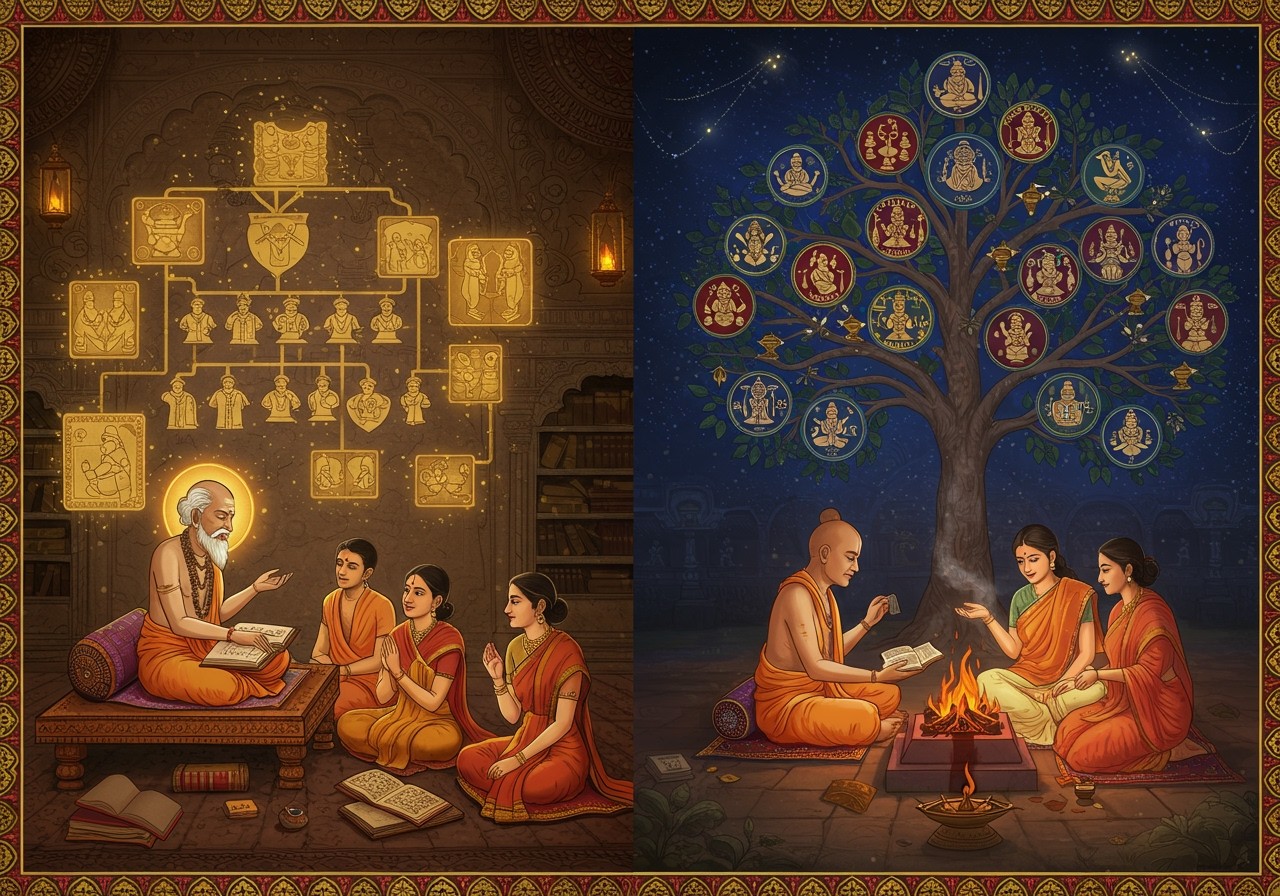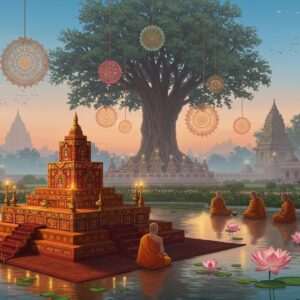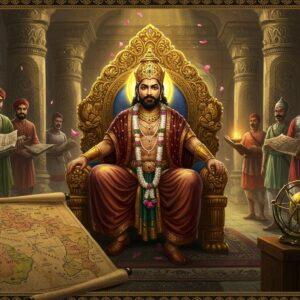
The Gotra system, a vital aspect of Hindu society, connects us to our ancestral heritage. It’s more than just a name; it represents a lineage, a connection to ancient sages who shaped our spiritual traditions. By understanding the Gotra system, we gain insights into our family history and its significance, especially in marriage customs. Let’s explore this intricate tradition and clarify any misconceptions surrounding it.
What is Gotra?
Gotra, originating from Sanskrit, signifies descent from a common male ancestor, a lineage tracing back to ancient rishis (sages). Passed down through generations, primarily patrilineally, Gotra serves as a clan identifier within the larger Hindu community. It plays a crucial role in Hindu rituals and ceremonies, particularly marriage, where it helps prevent alliances within the same ancestral line. This practice, known as exogamy, is believed to maintain genetic diversity and uphold the sanctity of family lineage.
For a deeper understanding of Dharma and Karma, explore our blog post on Dharma and Karma in Hinduism Explained. It offers a comprehensive look at these foundational principles of Hindu philosophy.
Significance and Functions of Gotra
The Gotra system has deep cultural and social significance, serving various functions:
- Lineage Identification: Gotra identifies families and clans, linking us to our ancestors, the ancient seers and sages. It helps us understand our place within the larger tapestry of Hindu society, fostering a sense of belonging and shared heritage. It’s like a thread connecting us to our roots, reminding us where we come from.
- Marriage Alliances: Gotra plays a pivotal role in traditional Hindu marriages. It ensures that couples do not share the same Gotra (Sagotra marriages), promoting genetic diversity. This custom reflects the deep respect for lineage purity and the importance of broadening familial connections within the community. It also has implications for inheritance and family ties.
- Rituals and Customs: Gotras are often invoked during important life events and religious ceremonies. They are mentioned in prayers and rituals, connecting the individual to their ancestors and seeking their blessings. This emphasizes the continuity of tradition and the importance of ancestral guidance in our lives.
- Spiritual Legacy: Gotras act as a bridge between individuals and their ancestral heritage, connecting them to shared wisdom, rituals, and traditions. It’s a link to our spiritual forefathers, reminding us of the values and beliefs that have shaped our culture for generations. They provide a framework for understanding our place within the larger spiritual landscape of Hinduism.
Clarifying Misconceptions about Gotra
Several misconceptions surround the Gotra system. Let’s clarify some common misunderstandings:
- Gotra vs. Caste: Gotra and caste are distinct concepts. Gotra refers to ancestral lineage, while caste is a social construct related to occupation and social hierarchy. While they may sometimes intersect, they serve different purposes and should not be conflated. Caste is about social stratification, while Gotra is about ancestral descent.
- Gotra and Surname: Gotra is not a surname. Surnames are family names that can change, especially after marriage. Gotra, however, remains constant, representing a deeper ancestral connection that transcends immediate family ties. It signifies a shared ancestry, a common thread that binds individuals within a particular lineage.
- Gotra and Marriage: A woman’s Gotra doesn’t change after marriage. While she may adopt her husband’s Gotra for certain rituals, her original Gotra remains unchanged, reflecting her own ancestral heritage. This underscores the importance of both lineages in the marital union. This is a common misunderstanding that needs clarification.
Explore our blog post on Hinduism’s Global Reach to gain a deeper appreciation for the diverse traditions within Hinduism.
Gotra in Modern Times
While the Gotra system’s relevance may vary in urban areas due to changing social norms, it remains deeply significant, particularly in marriage traditions, especially in rural India. Gotras continue to be a symbol of cultural identity and a link to our ancestral roots. They offer a sense of continuity and belonging in a rapidly changing world.
For Saraswati Puja, we offer a range of Clay Doats and other essential items. Explore our collection to find everything you need for a blessed celebration.
How Poojn.in Can Assist You
At Poojn.in, we understand the significance of Gotra and its role in Hindu traditions. We offer a wide selection of authentic puja items and resources to help you connect with your heritage. From Pancha Sasya (five grains) to white mustard seeds, we provide all the necessary ingredients for your rituals. We also offer a wide range of spiritual books, including the Srimad Bhagavad Gita in various languages.
Our Raksha Sutra (sacred thread) collection is perfect for various rituals and ceremonies. We source our products with utmost care, ensuring their authenticity and quality. Visit poojn.in today and explore our vast collection of cultural and religious products.
Learn more about the rich history and significance of Saraswati Puja in our articles: History and Significance of Saraswati Puja and Saraswati Puja Traditions Across India.


